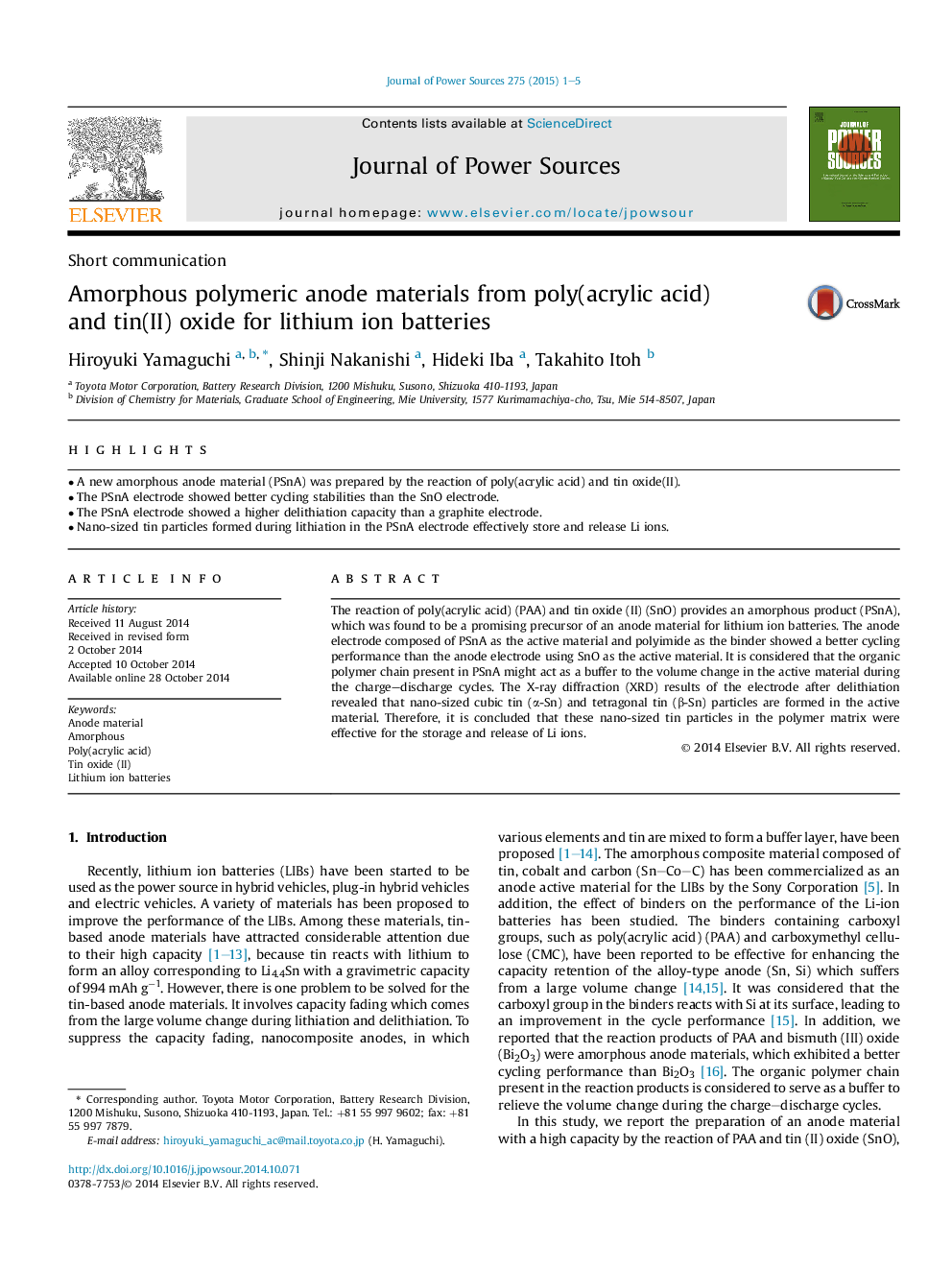| Article ID | Journal | Published Year | Pages | File Type |
|---|---|---|---|---|
| 7734218 | Journal of Power Sources | 2015 | 5 Pages |
Abstract
The reaction of poly(acrylic acid) (PAA) and tin oxide (II) (SnO) provides an amorphous product (PSnA), which was found to be a promising precursor of an anode material for lithium ion batteries. The anode electrode composed of PSnA as the active material and polyimide as the binder showed a better cycling performance than the anode electrode using SnO as the active material. It is considered that the organic polymer chain present in PSnA might act as a buffer to the volume change in the active material during the charge-discharge cycles. The X-ray diffraction (XRD) results of the electrode after delithiation revealed that nano-sized cubic tin (α-Sn) and tetragonal tin (β-Sn) particles are formed in the active material. Therefore, it is concluded that these nano-sized tin particles in the polymer matrix were effective for the storage and release of Li ions.
Related Topics
Physical Sciences and Engineering
Chemistry
Electrochemistry
Authors
Hiroyuki Yamaguchi, Shinji Nakanishi, Hideki Iba, Takahito Itoh,
